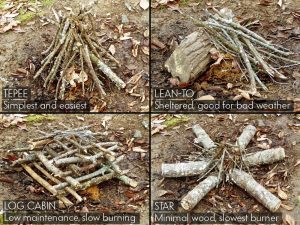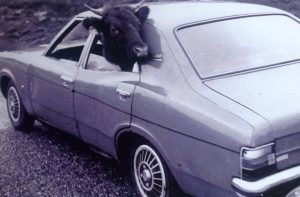
Cruise control
We all do it. Set our vehicle on cruise control while driving. Some of the newer vehicles even brake and can keep the correct lane. There is nothing wrong with doing this. What I am talking about is the cruise control we set on life.
In both business and personal lives, people will cruise through. Without thinking of why they are doing a process, people are content to do the same thing every day in the same manner. This is where knowledge management can assist, whether a formal process improvement program like Six Sigma or project management or an informal program such as storytelling and demonstrating.
Such disruptive or radical approaches enhance what is done in changing a business or personal life; these changes are designed around the people who conduct the procedure. Those people need to speak up and pause the cruise control for a moment to have someone look at the overall process.
Let’s look at the process of creating a fire. What tools are needed? The tools required to make a fire are oxygen, heat, and fuel. People will debate the process on whether stacking, teepee, log cabin, heavy pieces on the bottom, or tiny pieces first. What is the correct approach? That depends on the need for the fire. How quickly the coals are needed to create the desired warmth.

So how does this apply to a business or personal process? If there is a pain area in the process, it is up to the individual to recognize that it may be an issue. These are areas in which a knowledge manager can assist1. They are knowledgeable in identifying the process/procedure with the best available tools to enhance the organization while serving the person the smoothest possible outcome to the problem.
The end goal of any knowledge management program is to create this hassle-free time savings measure2. This could be a new customer relationship management (CRM) program or a slight change in the routing on a document. These process changes are key to any program.
It may not be a shiny new car but rather a trusty old pickup that is needed as a tool to move the animals, a simple tractor to plow the field instead of a new John Deere. It could be using a bulletin board instead of a CRM. No matter the tool used, it will still be the people using it daily who have the most say in the specifications needed.

The best tool available for the process will save the company money only if people are using it. The best tool can be built, but if people do not like it or use it, we will be wasting time and money. If all we have is a car to move the animals, then that is what we use.
Identifying the needed metrics ahead of time is needed to judge if the overall process is simpler and more efficient. These metrics need to be measured prior to the release of the tool and again once it is built. Training needs to be done on all our tools, including the computer. Once we understand how to best use them, that is when we can go back to cruise control.
We all want that trouble-free ride throughout our day, but sometimes we all need to look at the road, traffic, and weather to determine if we can continue driving on.

Header image source: Adapted from Wikimedia Commons, CC BY-SA 4.0.
References:





